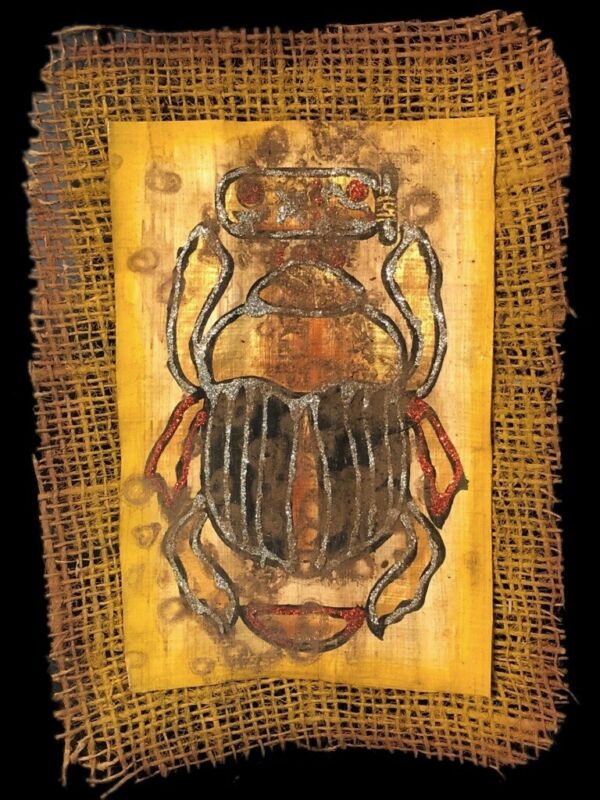

During the 9th century, papyrus went into severe decline, and linen dominated the paper market until being replaced in the 19th century by cellulose from wood pulp. Papyrus markets also suffered as use of parchment, made from animal skins, became popular in ancient Rome. That technique had been developed in China about 100 A.D. The Arabs had learned another technique for making paper by using linen fiber from the flax plant. Papyrus paper-making waned in the 9th century A.D., when Egypt came under Arab rule. After the writing on it no longer was needed, old papyrus was sold for use as mummy wrappings and to make a kind of pasteboard used to manufacture coffins. In ancient times, papyrus paper was recycled. Many small businesses making papyrus paper in Cairo today use this technique, steps of which are explained at the far right of this page. It remained a secret for centuries until Pliny the Elder revealed it in 77 A.D. To protect their monopoly, pharaohs jealously guarded details of the papermaking process. Factories that produced it must have been large by the standards of those times. It was sold in large bales or rolls sometimes 20 to 45 yards long. But the plant's most important role was for paper. In the 5th century B.C., Xerxes, king of Persia, used papyrus stems to construct a bridge of boats across the Hellespont (now the Dardanelles), enabling his army to invade Europe. Other nations also benefited militarily from papyrus. In later millennia, papyrus exports from government-controlled marshes would become the chief source of income for Egyptian monarchs.

On the strength of its armed forces, Egypt extended its rule over Nubia to the south and by 1400 B.C., had pushed its northeastern border across Phoenicia to the Euphrates River. raised money needed to maintain armies on the Nile. Exports of Egyptian-made papyrus paper beginning about 3000 B.C. Papyrus also helped the pharoahs to build armies. Bouquets of papyrus flowers were left in Egyptian tombs to honor the dead, an antecedent of today's tradition of floral tributes at funerals. Woven into crowns, its delicate flowers adorned Roman religious shrines and the heads of diplomats. " The constitution of Athens was written on papyrus paper. Pliny the Elder, a Roman writer of the 1st century A.D., called it "the material on which the immortality of human beings depends. The wonders of papyrus were well understood in antiquity. This is the same natural material that Thor Heyerdahl used to build a boat, Ra II, in which he crossed the Atlantic from Africa to the West Indies in 1970. Today, Ethiopians build small papyrus boats as they have for thousands of years on the shores of Lake Tana. In the temple, a bas relief shows a boatman rowing a papyrus boat and wearing a bulky collar made from a bundle of the plant's dried stems. Its reeds were bundled to make boats and, as suggested by a scene depicted in an ancient temple, it was made into life preservers. Papyrus did even more for cultures that flourished along the Nile. And, according to Hassan Ragab, head of Cairo's Papyrus Institute, which has fostered much of the revived interest in it, the plant's thick rootstock, or rhizome, provided ancient Egyptians an important source of calorie-rich food. It also is the plant that provided early settlers in the cradle of civilization with raw materials to make sandals, twine, mats, cloth, building material and fuel.

Papyrus provided ancient peoples with the first useful form of writing paper.

From cuttings carefully nurtured in large pots set in the Nile River in Cairo, the reedy plant once worshiped by pharaohs has become a major tourist attraction and is reviving interest in one of history's most important plant-human relationships. Papyrus, the marsh-dwelling wonder plant of ancient Egypt that later vanished from the region, is making a comeback.


 0 kommentar(er)
0 kommentar(er)
